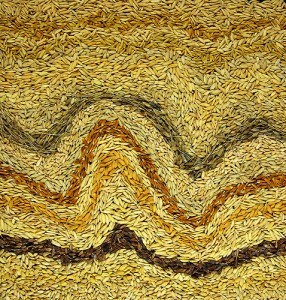I’ve pointed to a couple of different stories in the past few weeks dealing with the legal protection of rice diversity, and I thought it might be a good idea to bring them together here.
The first concerned aromatic Jasmine rice from Thailand. This was the lead paragraph:
On Wednesday, His Majesty the King applauded Thai scientists and those involved in the patenting of genes that can control the aroma of Thai jasmine rice. His Majesty said the patent would ensure that Thais take pride in eating Thai rice. They won’t have to eat rice that has a foreign patent.
However, it turns out the patent is actually for a transgenic aromatic rice, which is not quite the same thing. In fact, it would be difficult to protect the gene controlling the aroma of Thai rice, because that same gene also controls aroma in all other aromatic rices around the world. A recent paper suggests as much:
The badh2 mutation … [was] surveyed in a representative rice collection, including traditional aromatic and non-aromatic rice varieties, and strongly suggested a monophylogenetic origin of this badh2 mutation in Asian cultivated rices.
The second article is about rice with a red pericarp. This is often said to have health benefits, due to the accumulation of various nutrients along with anthocyanins.
Scientists are trying to protect a traditional rice variety that is on the verge of extinction in Himachal Pradesh. The red rice is more disease-resistant and hardier than strains cultivated commercially over most of India and can lend that through cross-breeding.”We are trying to provide legal protection to the vanishing red rice variety, grown in the state for centuries, by bringing it under the ambit of the Protection of Plant Varieties and Farmers’ Rights Act 2001,” R.P. Kaushik, director of the rice research centre at CSK HP Krishi Vishvavidyalaya, an agricultural university based in Palampur. told IANS.
Now, red pericarp is the ancestral state in rice, and it’s occurrence is geographically widespread. 1 So, again, if this rice is to be protected, it could not be protected simply as “red rice”, but rather as a particular, clearly defined, variety of red rice. Anyway, as Bhuwon points out in his comment on the article, if it fetches such high prices as the article suggest, is there really a need for legislative protection?
But then, arguments for legal protection of genetic resources are not always grounded in anything more than a sort of reflexive place-ism.
